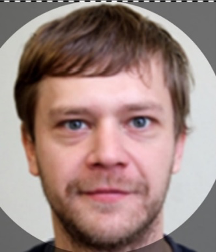Mentor: Patrick Vogt
Mentor's Responsibility for PARADIM: Post-doc Associate Matreials Science and Engineering
REU intern: Jacob Steele

Patrick Vogt performed his Ph.D. on oxide molecular beam epitaxy at the Paul Drude Institute of Solid State Electronics (PDI) in Berlin, Germany (Advisor: Prof. Henning Riechert, Supervisor: Dr. Oliver Bierwagen). At PDI, he focused on the growth of the III-O compounds Ga2O3, In2O3, and (In,Ga)2O3. After PDI, Patrick did a brief post doc at the UC Santa Barbara in the oxide research group of Prof. Jim Speck, where he synthesized (Al,Ga)2O3/Ga2O3 heterostrucutres. Before coming to Cornell, to Prof. Darrell Schlom, Patrick had an appointment in semiconducting industry where he was responsible for the process development for the fabrication of III-V high-power laser devices.
Patrickˈs research interests include the synthesis of semiconducting oxides by molecular beam epitaxy. His focus is on the reaction kinetics, surface physics, and thermodynamics of binary and ternary III-VI and IV-VI compounds.
Project Title:
Growth of device-efficient, high mobility p-type transparent conducting oxides
Project Description:
The target of this project is the synthesis of unprecedented p-type transparent conducting oxides (TCOs). The design and development of new p-TCOs may enable the synthesis and processing of unprecedented p-type and n-type oxide heterostructures. This is already achieved in 'conventional' semiconductor devices (e.g. based on III-V materials), which requires both p-type and n-type semiconductors. The same is true for TCOs: p-type TCOs are the much-needed ingredient for low-power transparent circuits, for example.
Research question that defines the REU student's project:
What is the crystal phase, surface morphology, and electrical conductivity of those novel p-type TCOs?
Project plan/research task to answer the research question:
Initial structural and electrical characterization of those synthesized TCOs by x-ray diffraction (XRD), atomic force microscopy (AFM), and Hall measurements.
List of tasks to be performed by the REU student and tasks to be performed by the mentor to answer the research questions:
The student shall measure and characterize the thin films synthesized by molecular beam epitaxy, using XRD, AFM, and standard Hall measurements. She/He shall provide a first physical explanation of the obtained results and discus them with her/his mentor. The mentor synthesizes the thin films and decides which films will be measured by XRD, AFM, and Hall. The mentor guides the student by her/his data acquisition as well as data analysis --- with technical and scientific advises.







